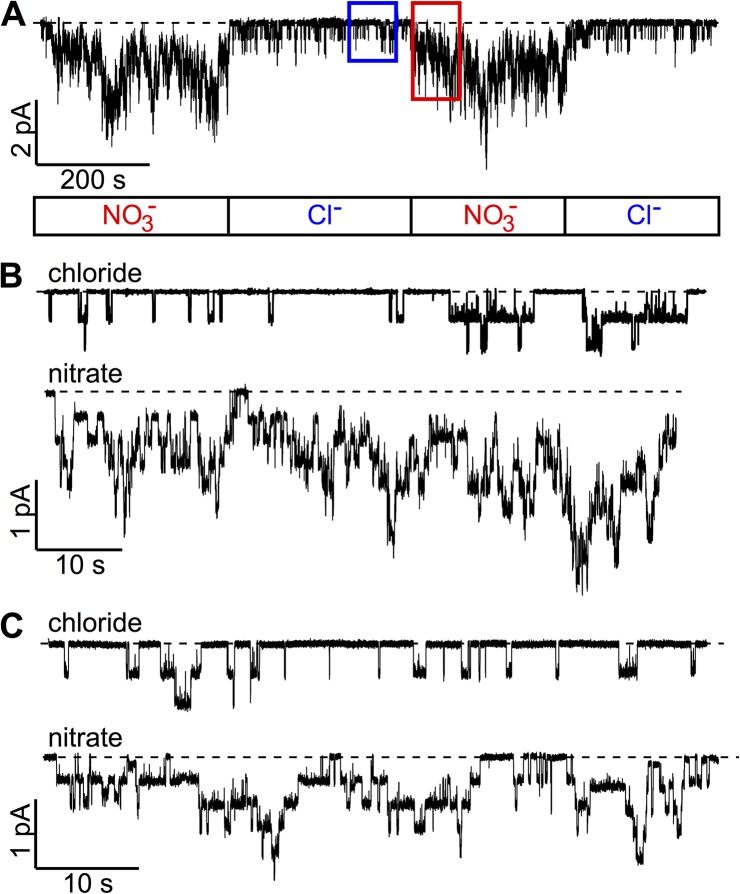Figure 6.
NO3− enhances the activity of CFTR mutants with defective gating. (A) A continuous current trace showing an increase of channel activity of ΔNBD2-CFTR by NO3−. ΔNBD2-CFTR currents were first activated by PKA and ATP to a steady state before applying 2 mM ATP in Cl− or NO3− bath (marked in the box below the trace). (B) Expanded current traces from A (specified with red and blue rectangular boxes) to better discern each opening/closing event. Although accurate microscopic kinetic analysis cannot be attained, we carry out semiquantitative analysis for nine similar recordings by counting the number of opening events within a fixed time of ∼80 s in the same patch to roughly estimate the rate of opening in Cl− or NO3−. The resulting increase of the rate of opening by NO3− (2.48 ± 0.22–fold; n = 9) is much smaller (P < 0.01) than the fold increase of Po (5.67 ± 0.90; n = 9), indicating a simultaneous lengthening of the open time by NO3−. (C) Potentiation of G551D-CFTR gating by NO3−. Similar analysis of the rate of opening described in B was performed. In five patches, the fold increase of the rate of opening (2.19 ± 0.25; n = 5) is again significantly smaller (P < 0.05) than the magnitude of increase in Po (3.75 ± 0.86; n = 5).

